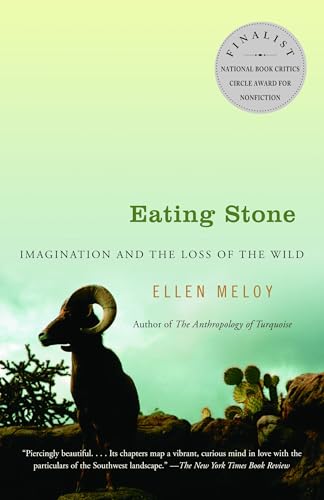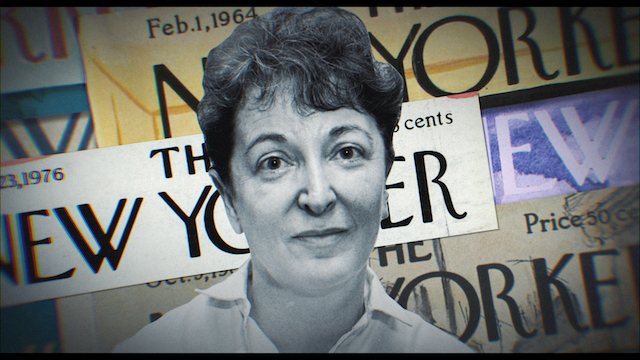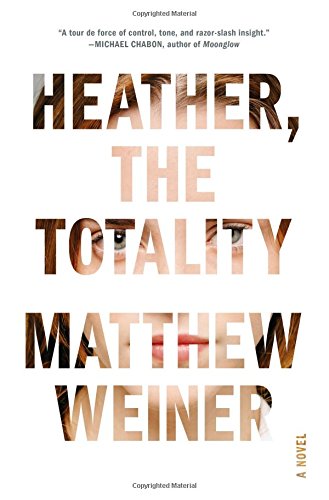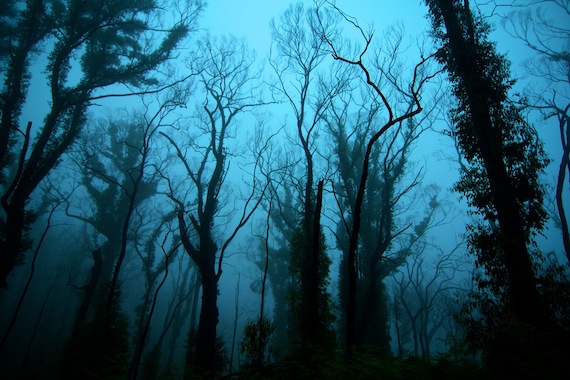
Click here to read about “Post-40 Bloomers,” a monthly feature at The Millions.
1.
The members of my family who are not Cherokee did not come to the United States aboard the Mayflower, pass through Ellis or Angel Island, or cross either the Mexican or Canadian borders. What I know of one adventurous ancestor is that the ship he boarded in Scotland landed on the shores of Galveston, Texas — a lesser-known but also historical point of immigration — and made his way to Los Angeles. Early in the 20th century, when an entire nation was moving west, his son felt the tug of these roots and moved east — all the way to Roswell, N.M., where my mother was born.
Like the writer and naturalist Ellen Meloy (1946-2004), a fifth-generation Californian who lived most of her adult life in Utah and Montana, I am a Westerner who lacks the romanticized, Manifest Destiny-informed view that Thoreau expressed in his 1862 essay “Walking”: “We go eastward to realize history and study the works of art and literature, retracing the steps of the race; we go westward as into the future, with a spirit of enterprise and adventure.”
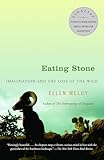 What Meloy does share with Thoreau is a need for wilderness. As a naturalist and memoirist, she guides her readers toward a conscious relationship with the natural world, urging them to bear witness — to choose something to care about — because, as she writes in her final book, Eating Stone: Imagination and the Loss of the Wild, “When you truly understand one thing, a hawk, a juniper tree, a rock, you will begin to understand everything.”
What Meloy does share with Thoreau is a need for wilderness. As a naturalist and memoirist, she guides her readers toward a conscious relationship with the natural world, urging them to bear witness — to choose something to care about — because, as she writes in her final book, Eating Stone: Imagination and the Loss of the Wild, “When you truly understand one thing, a hawk, a juniper tree, a rock, you will begin to understand everything.”
2.
Meloy spent much of her childhood in California, but her family moved frequently as her father’s work with the Federal Aviation Association required. She graduated from high school in London, studied art in France and Italy, and then returned to the U.S., where she earned a degree in art from Goucher College. In the 1970s, she received a Master’s in Environmental Studies from the University of Montana. She married Mark Meloy, a river ranger for the Bureau of Land Management, in 1985. For a decade beginning in 1994, when she published her first book, and ending in 2004, when she died suddenly from a heart attack, Ellen Meloy wrote four books, each devoted to some aspect of the Colorado Plateau, the Chihuahuan Desert, or the Great Basin — the rugged geography she knew best.

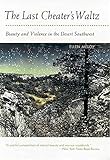
 Her first book, Raven’s Exile: A Season on the Green River, was published when Meloy was 48 and won the Spur Award for contemporary nonfiction from the Western Writers of America. Between the publication of Raven’s Exile and her second book, The Last Cheater’s Waltz: Beauty and Violence in the Desert Southwest (1999), Meloy received a Whiting Award (1997). Eating Stone, published posthumously in 2005, was nominated in nonfiction for the National Book Critics Circle Award and also received a Banff Mountain Book Award for Adventure Travel.
Her first book, Raven’s Exile: A Season on the Green River, was published when Meloy was 48 and won the Spur Award for contemporary nonfiction from the Western Writers of America. Between the publication of Raven’s Exile and her second book, The Last Cheater’s Waltz: Beauty and Violence in the Desert Southwest (1999), Meloy received a Whiting Award (1997). Eating Stone, published posthumously in 2005, was nominated in nonfiction for the National Book Critics Circle Award and also received a Banff Mountain Book Award for Adventure Travel.
More personal than her other books, The Anthropology of Turquoise: Reflections on Desert, Sea, Stone, and Sky — a 2003 finalist for the Pulitzer Prize in nonfiction, winner of the Utah Book Award, and a Banff Mountain Book Award — provides a window into Meloy’s creative life. In the opening essay, she writes that for many years, she “made a living in technical illustration, churning out laboriously stippled pen-and-ink drawings of bones, feathers, fish, and wolves.” While she is never explicit about why she turned to writing, it is easy to to imagine after reading even one of her books that the depth of her imagination and breadth of her knowledge would need an additional outlet. Luckily for her readers, Meloy employs both talents in each of her books, illustrating them with maps, petroglyphs, plants, and animals.
In the closing essay of Anthropology, Meloy reflected on the challenge modern nature writers face:
A great deal of nature writing sounds like a cross between a chloroform stupor and a high mass, in Latin, on a hot day, surrounded by bleeding plaster icons. Words penned to the “wild” chronicle a failing purity, where no land or seascape is untouched and all that is truly wild is lost…I write a book about a river and cannot tell if it is a love story or an obituary or both…As I bury my face in the voluptuous innards of cliffrose petals on a remote mesa, a low-flying, kelp-colored military jet passes over with a roar so thunderous it nearly makes my ears bleed. Today is my birthday, and during its twenty-four hours nineteen species will become extinct.
She evidently questioned the power of her art to effect change; and yet she continued to write, up until her untimely death.
Capturing her expansive spirit in an appreciation column for The New York Times Verlyn Klinkenborg wrote,
Knowing her, I find it easy to imagine that on the night she died, Ellen came to a waterfall in her dreams — a stream pouring over the edge of the slick rock — and jumped and simply kept falling…Like any good naturalist, Ellen…also recorded many true things about herself, things that her sudden death make even truer somehow. [About herself] as a girl, she wrote, “I thought I would never survive my imagination.” She survived it just long enough for friends and readers to see how powerful it really was.
I discovered Meloy’s writing shortly after her death, and as I read, it was impossible not to mourn the loss of her voice, her intellect, and the considerable energy with which she advocated for the protection of desert landscapes — landscapes that, time and again, have been deemed sites for damming, bombing, and dumping hazardous waste. To support writers who investigate such landscapes the The Ellen Meloy Fund for Desert Writers was established at the time of her death; the Desert Writers Award has been given annually since then to a writer of nonfiction.
3.
 Taking a journey down any part of the 730-mile trip through Desolation Canyon along the Green River, the setting of Raven’s Exile, requires one to either “run the river with a licensed commercial outfitter or obtain a permit from the U.S. Bureau of Land Management (BLM).” Meloy thus makes the trip with her husband, who works for the BLM. She also takes a side trip with Ken Sleight, the river runner used as a model for the eco-guerilla Seldom Seen Smith in Edward Abbey’s influential 1975 novel The Monkey Wrench Gang. While Abbey’s brand of activism is not hers, the book is, in many ways, a tribute to Abbey: Sleight recalls for her what Glen Canyon looked like before it was dammed and filled with water by the U.S. Bureau of Reclamation in 1963 to create Lake Powell, which he calls Blue Death. While there with him, she jokes about making a run to Las Vegas to purchase dynamite and committing a little “monkey-wrenching,” but then adds,
Taking a journey down any part of the 730-mile trip through Desolation Canyon along the Green River, the setting of Raven’s Exile, requires one to either “run the river with a licensed commercial outfitter or obtain a permit from the U.S. Bureau of Land Management (BLM).” Meloy thus makes the trip with her husband, who works for the BLM. She also takes a side trip with Ken Sleight, the river runner used as a model for the eco-guerilla Seldom Seen Smith in Edward Abbey’s influential 1975 novel The Monkey Wrench Gang. While Abbey’s brand of activism is not hers, the book is, in many ways, a tribute to Abbey: Sleight recalls for her what Glen Canyon looked like before it was dammed and filled with water by the U.S. Bureau of Reclamation in 1963 to create Lake Powell, which he calls Blue Death. While there with him, she jokes about making a run to Las Vegas to purchase dynamite and committing a little “monkey-wrenching,” but then adds,
I try hard to fill my coward’s heart with the hope of Sleight, Abbey, and others for whom Glen Canyon was a tragedy but also a force around which to rally and say, No more wasting of places like Glen Canyon, no more oversized, outstripped, ultrazealous, transcendence of the West’s own limits, no more trying to make Utah, Arizona, New Mexico, and the rest of the desert look like upstate New York.
While Meloy often writes about loss, she also celebrates what exists, reminding us that there is still plenty to care about. On the Green River, she works with her husband and a fisheries team investigating the habitat of the chub, a species of fish that
adapted over millions of years [coping] with salinity shifting streambeds and waters that ranged from the cold torrents of spring to the tepid shallows of summer. They survived the rivers of lava that poured from nearby volcanoes into the Grand Canyon’s nascent chasm every few thousand years, damming the Colorado River near Lava Falls until the lava dam succumbed to the river’s power.
4.
In The Last Cheater’s Waltz, Meloy creates what she calls her “Map of the Known Universe,” as she treks through the atomic and nuclear geography of the Chihuahuan Desert of the Southwest, marrying it with places like “Australia’s Maralinga, the African Sahara, China’s Lop Nur west of the Gobi Desert, the Rajasthan in northwest India” — all regions that provided “the geographic equivalent of a ‘neutral laboratory’’’ for weapons testing by those operating on the assumption that the populations of these areas were “invisible, expendable, or relocatable.”
Juxtaposing the behavior of a species native to the desert with that of the men conducting the atomic bomb test at Trinity, Meloy describes the Jornada del Muerto toad colony, whose mating ritual is triggered by rainstorms. As the sky cleared and Oppenheimer made the decision to go forward with the test, the toads began to croak, rose to the surface of the sand and “straddle[d] one another like refueling bombers.” Having planted that image in our heads, Meloy turns our attention to the homo sapiens.
Lying in their trenches, their heads turned away from ground zero and eyes shaded against the coming bright flash, they filled their lungs with the aroma of wet creosote and their ears with sweet unearthly notes of The Nutcracker Suite, which floated into the ether of ground zero when a distant radio station crossed wavelengths with the Trinity frequency. Yet so intent did they seem on the imminent mining of their long-awaited white light, the immediate world around them offered only counterpoint. The soundtrack for the ultimate evolutionary moment of this century, to which nothing on Earth would be immune, could not have been stranger: a Tchaikovsky waltz and small pockets of air pushed through hundreds of ballooning throats.
The subject matter makes this Meloy’s darkest book, but it is also the one in which she initially writes of “San Andreas Ewe 067,” who she first encounters in the Trinity site environment. Her interest in this hardy, lone ewe would inspire Eating Stone.
5.
Meloy chooses the endangered bighorn sheep to help her “understand everything” and logs thousands of miles to learn as much as possible about the species. In Eating Stone, her quest begins at her home in Utah where she observes local bighorns, and takes her to Arizona, Southern California, and as far as Mexico’s Baja peninsula (near the setting of John Steinbeck’s The Log from the Sea of Cortez). When she returns to the protected area of the Chihuahuan Desert of New Mexico, she discovers that San Andreas Ewe 067 has died.
Much of Eating Stone celebrates the heroic persistence of bighorn sheep, particularly those in Utah and Southern California. But at the end of the book, Meloy becomes somewhat melancholy:
Sometimes I picture this moment in history, a moment with which my own lifetime chances to coincide, as a gate that we have been closing for some time. On the other side of the gate, deep landscape falls farther and farther away, always at the point of loss. The spellbound threshold between humanity and the rest of nature is very nearly pulled shut to the latching point. Soon we shall turn our backs and walk away entirely, place-blind and terribly lonely.
Even so, Meloy has given us eyes with which to see the many things she cares about and complex, multiple ways to think about them.
6.
Meloy investigates different modes of advocacy for the preservation of wilderness, but she is not prescriptive, nor does she attach herself to a particular movement, such as the Sierra Club or Earth First. But in the essay “Tilano’s Jeans,” from The Anthropology of Turquoise, Meloy is explicit about our responsibility to the planet.
Treating nature as a pet or a therapist ends up little better than treating it as a slave. Kinship demands reciprocity. Every nature girl and boy should be prepared to defend the places they love. Otherwise we have not earned them. When we march in from the starry nights and dazzling rivers, we must argue on their behalf, pressure politicians and other moronic invertebrates to wean themselves from their unsightly addiction to corporate blubber and for once act in favor of things that matter, like air to breathe, water to drink, and space to roam. We must exalt the biocentric paradigm, speak for the creatures that have no voice, staunch the lunatic hemorrhage of wild lands from the face of the planet.
Choose something to care about.
I choose Eucalyptus globulus, the blue gum eucalyptus, 22,000 of which are scheduled for removal from a Berkeley hillside because they threaten the growth of native species. The language we use to talk about non-native species raises questions that interest me: given the change we have affected on the planet, can the status of a non-native species ever be considered native? Which non-native species get to survive and where? Who decides?
I doubt I’ll “begin to understand everything.” But I’ll begin to understand something.
Choose something.
Image Credit: Flickr/patrick wilken
